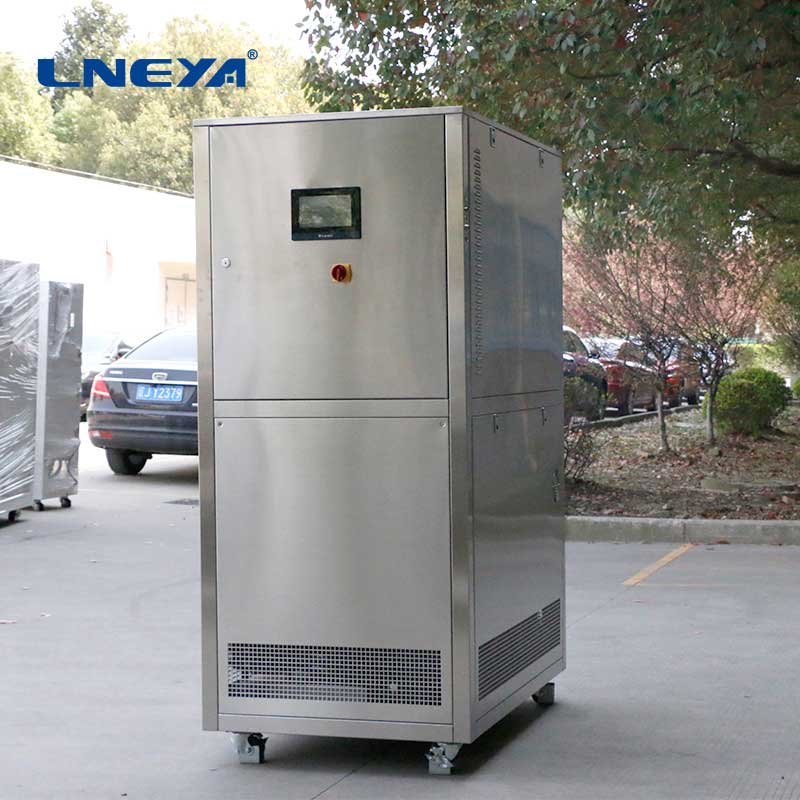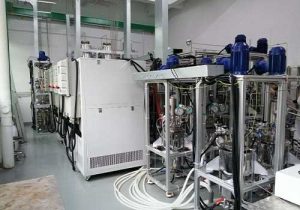water cooled chiller function
The Function of Water – Cooled Chillers: A Comprehensive Explanation
Water – cooled chillers play a pivotal role in numerous industrial and commercial settings, providing reliable and efficient cooling solutions. Understanding their functions is crucial for industries that rely on precise temperature control to ensure the smooth operation of processes and the quality of products.

Fundamental Working Mechanism and Core Function
The primary function of a water – cooled chiller is to remove heat from an industrial process or equipment and dissipate it into the environment, thereby maintaining the desired temperature. This is achieved through a refrigeration cycle that involves several key components and the use of water as the heat – transfer medium.
The cycle starts with the compressor, which raises the pressure and temperature of the refrigerant gas. The high – pressure, high – temperature refrigerant then flows to the condenser. Unlike air – cooled chillers that release heat into the ambient air, water – cooled chillers transfer this heat to water. The condenser in a water – cooled chiller is designed to allow the refrigerant to release its heat to the water flowing through it. As the refrigerant gives up its heat, it condenses into a liquid.
The liquid refrigerant then passes through an expansion valve, where a sudden drop in pressure causes it to evaporate and cool down significantly. The cold refrigerant enters the evaporator, where it absorbs heat from the fluid (usually water or a glycol – water mixture) that is being cooled for the industrial process. This cools the process fluid, which is then pumped back to the point of use in the industrial system. The now – warmed refrigerant is drawn back into the compressor to repeat the cycle, continuously removing heat from the process and maintaining the required temperature.
Applications and Diverse Functions
Manufacturing Industry
In manufacturing, water – cooled chillers have multiple functions. In metalworking, they cool cutting fluids, which lubricate cutting tools, remove heat generated during machining, and flush away metal chips. By maintaining the proper temperature of the cutting fluid, water – cooled chillers improve the performance of the tools, extend their lifespan, and enhance the surface finish of the machined parts. In plastic manufacturing, these chillers cool the molds in injection molding machines. Precise temperature control of the molds ensures proper solidification of the plastic, resulting in products with accurate dimensions and high quality. Additionally, in electronics manufacturing, water – cooled chillers are used to cool sensitive equipment such as servers in data centers, semiconductor fabrication tools, and printed circuit board assembly machines, protecting the components from overheating and ensuring reliable operation.
Food and Beverage Industry
In the food and beverage sector, water – cooled chillers serve critical functions. They are used for cooling and freezing food products to extend their shelf life and maintain quality. For example, in meat processing plants, water – cooled chillers rapidly cool freshly slaughtered meat to prevent the growth of bacteria. In the production of dairy products, they cool milk and other ingredients to inhibit spoilage. In the beverage industry, these chillers cool the ingredients during production, such as in the brewing of beer or the mixing of soft drinks. They also maintain the cold chain during storage and distribution, ensuring that products like bottled beverages remain at the optimal temperature to preserve taste and safety.

Pharmaceutical Industry
The pharmaceutical industry depends on water – cooled chillers for precise temperature control. In laboratories, they cool equipment such as centrifuges, incubators, and freezers used for research and development. During pharmaceutical manufacturing, water – cooled chillers maintain the specific temperatures required for drug synthesis, formulation, and sterilization processes, safeguarding the integrity of the active ingredients and ensuring the quality and efficacy of medications. They are also crucial for maintaining the cold chain in the storage and transportation of temperature – sensitive drugs, vaccines, and biological products, preventing degradation and ensuring the safety of patients.
Advantages of Water – Cooled Chillers in Functionality
High Cooling Capacity
One of the significant functional advantages of water – cooled chillers is their ability to handle high cooling loads. Water has a high heat – carrying capacity, allowing it to absorb and transfer large amounts of heat efficiently. This makes water – cooled chillers suitable for large – scale industrial applications where substantial cooling is required, such as in heavy manufacturing plants or large – scale data centers.
Energy Efficiency
Water – cooled chillers generally offer better energy efficiency compared to air – cooled models, especially in regions with moderate ambient temperatures. Since water can absorb heat more effectively than air, the refrigeration cycle in water – cooled chillers can operate more efficiently, reducing energy consumption. This not only leads to cost savings for industries but also contributes to environmental sustainability by minimizing carbon emissions.
Stable Performance
The use of water as a heat – transfer medium provides more stable cooling performance. Water temperatures tend to be more consistent than ambient air temperatures, which can fluctuate significantly throughout the day and with the seasons. This stability ensures that the temperature of the process fluid being cooled remains within a narrow range, which is essential for processes that require precise temperature control, such as in the pharmaceutical and electronics industries.
Limitations and Associated Considerations
Installation Requirements
Despite their functional advantages, water – cooled chillers have specific installation requirements. They need a reliable water source with an appropriate flow rate and pressure. Additionally, a cooling tower or a closed – loop water – cooling system is required to dissipate the heat absorbed by the water in the chiller’s condenser. Installing these additional components can be complex and costly, and it requires sufficient space for the cooling tower and associated piping.
Maintenance Needs
Water – cooled chillers also demand more maintenance compared to air – cooled models. The water used in the system can cause scaling, corrosion, and the growth of algae and bacteria over time. Regular water treatment, including the addition of chemicals to control pH levels, prevent scaling, and inhibit microbial growth, is necessary. Additionally, the cooling tower requires regular cleaning to remove debris and ensure proper heat transfer. Failure to perform adequate maintenance can lead to reduced efficiency, increased energy consumption, and potential damage to the chiller components.

Maintenance for Optimal Functioning
To ensure that water – cooled chillers continue to function effectively, regular maintenance is essential. This includes checking the water flow rate and pressure to ensure they are within the recommended range. Monitoring the refrigerant levels and pressure in the chiller is also crucial, as low refrigerant levels can indicate a leak and lead to reduced cooling performance. Cleaning the condenser tubes and the cooling tower on a regular schedule helps maintain efficient heat transfer. Additionally, performing routine inspections of the compressor, pumps, and other components for signs of wear or damage allows for timely repairs and replacements, preventing unexpected breakdowns and ensuring the long – term reliability of the chiller.
In conclusion, water – cooled chillers serve a wide range of vital functions across multiple industries. Their ability to remove heat efficiently, provide high – capacity and stable cooling, and offer energy – saving benefits makes them indispensable in many industrial and commercial applications. While they come with specific installation and maintenance requirements, understanding and addressing these aspects can help industries make the most of the capabilities of water – cooled chillers and ensure the smooth operation of their processes.
Related recommendations
industrial water heater manufacturers
671Industrial Water Heater Manufacturers: A Complete Guide Introduction Industrial water heaters are essential for processes that require consistent and reliable heating, such as manufacturing,...
View detailsHow to Deal with the High Temperature Alarm of the Chiller?
1284How to Deal with the High Temperature Alarm of the Chiller? The high temperature alarm of the chiller will cause the device to trigger the protection switch to be disconnected and cannot cont...
View detailschiller 24 kw
502Understanding the Price Factors of a 24 kW Water Chiller When it comes to industrial and commercial cooling solutions, water chillers play a crucial role. A 24 kW water chiller, in particular, ...
View detailsindustrial water chiller systems
784Industrial Water Chiller Systems: Efficiency, Applications, and Innovations Industrial water chiller systems are an essential component in many industries where precise temperature control is r...
View details
 LNEYA Chiller
LNEYA Chiller






HelloPlease log in